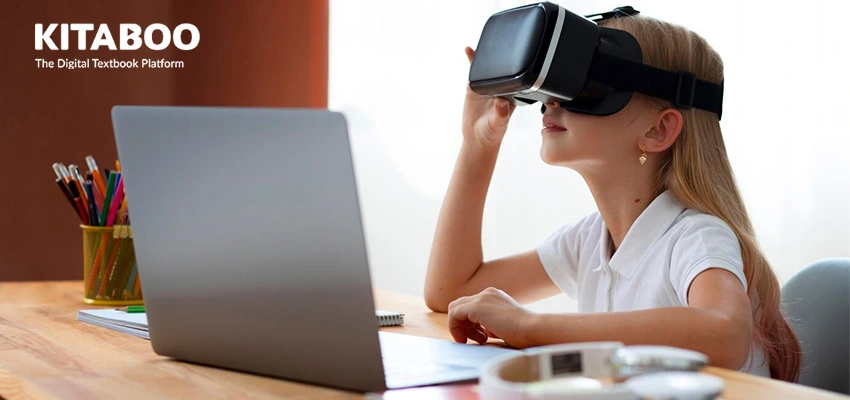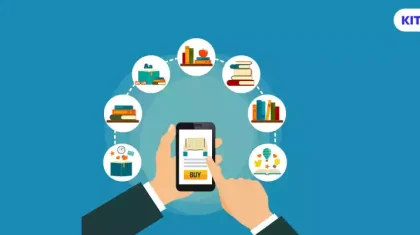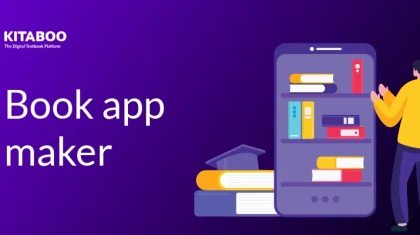
The Science of Student Engagement: How to Use Gamification and Interactivity in Digital Textbooks
Summarize this blog with your favorite AI:
Today, one of the biggest challenges for educators is to keep learners engaged, given so many distractions around every corner. Thus, educators and publishers need tools that captivate attention while enabling deep understanding.
Gamification in education and interactive digital textbooks are the most effective strategies that combine psychological insights with technological innovation to transform learning.
Furthermore, a report states gamification increases student motivation by 48%. Therefore, by blending interactivity and gaming principles into educational content, publishers can create materials that drive motivation, boost retention, and ensure long-term learning success.
This blog will help you understand the science of student engagement through game-based learning. It also provides practical steps for incorporating these features into digital textbooks.
Table of Contents:
I. The Psychology Behind Student Engagement
II. What is Gamification in Education?
III. Benefits of Interactive Digital Textbooks
IV. Strategies for Publishers to Boost Engagement
- Incorporating Gamified Elements
- Leveraging Multimedia for Interactivity
- Personalizing Content with Advanced Analytics
V. KITABOO: Revolutionizing Digital Textbooks with Gamification
VI. The Role of Data in Refining Engagement Strategies
VII. Conclusion
The Psychology Behind Student Engagement
Engagement is always more than merely paying attention—it’s about emotional and cognitive investment in the learning approach. Thus, educators and publishers must know the psychological triggers behind engagement, which is the initial step in building effective educational content.
Intrinsic vs. Extrinsic Motivation
Motivation is the foundation of student engagement and can be divided into two types:
- Intrinsic Motivation comes from inner motivations like curiosity, wanting to improve, or a real passion for gaining knowledge.
- Extrinsic Motivation is driven by external rewards like grades, recognition, or incentives.
Gamification in education balances these motivations. Gamified rewards like badges, points, or leaderboards encourage people to do things for rewards, while immersive experiences make learning fun and motivating.
Cognitive Benefits of Interactive Learning Materials
Interactive content like videos, simulations, and quizzes in digital textbooks engages our senses, helping our brains make stronger connections and remember information better. This type of content activates various brain parts, making learning more successful.
A recent study found that students using interactive learning materials scored higher in assessments than their peers relying on static content. This highlights the significance of designing dynamic and engaging online resources.
What is Gamification in Education?
Gamification in education means adding fun game elements to regular learning to make it more interesting. Unlike the usual educational practices, gamification helps create an exciting atmosphere, encouraging students to reach their objectives.
Principles of Game-Based Learning
Successful game-based learning relies on these principles:
- Clear Objectives: Set specific goals to guide learners.
- Progressive Challenges: Gradual difficulty increases and keeps learners interested.
- Immediate Feedback: This helps students stay on track and reinforces concepts.
- Competition and Collaboration: It encourages participation through leaderboards and team activities.
Types of Gamified Features in Digital Textbooks
Here are some gamified elements publishers can incorporate into their digital textbooks:
- Achievements and Badges: Reward milestones to boost motivation.
- Story-Driven Quests: Create a narrative that immerses students in learning.
- Interactive Quizzes and Polls: Test knowledge while keeping learners engaged.
- Leaderboards: Encourage healthy competition among students.
Benefits of Interactive Digital Textbooks
Below are the key benefits of interactive digital books for both learners and educators.
Enhances Retention and Understanding
Interactive digital textbooks have videos, animations, and clickable diagrams, which significantly help improve student engagement and understanding. Publishers must incorporate multimedia content into digital textbooks, making it simpler to learn abstract ideas and improving memory retention in the long run.
Promotes Active Participation
Active participation is essential for effective learning. Features like gamified quizzes, real-time feedback, and interactive simulations turn learners into active participants. This practical, hands-on approach promotes critical thinking and problem-solving, engrossing students in their learning journey.
Strategies for Publishers to Boost Engagement
Here are some effective strategies that publishers can leverage to boost engagement.
Incorporating Gamified Elements
Gamification can effortlessly turn a mundane textbook into engaging learning material. Here are some ways publishers can incorporate gamified elements into their digital textbooks:
- Progress Bars: Help learners monitor their progress and motivate them to finish lessons.
- Virtual Rewards: Use badges, certificates, or points to recognize achievements.
- Challenges: Include timed quizzes or puzzles that stimulate critical thinking.
KITABOO’s platform simplifies gamified feature integration, allowing publishers to create engaging content effortlessly.
Leveraging Multimedia for Interactivity
Multimedia content like videos, audio clips, and animations can make learning more engaging and accessible. For example:
- Interactive Videos: Enable students to pause, rewind, and answer embedded questions.
- Clickable Infographics: Simplify complex concepts through visual aids.
- Virtual Labs: Offer hands-on learning experiences in subjects like science and engineering.
Personalizing Content with Advanced Analytics
Personalization is a game-changer in the learning field. By evaluating how learners interact with digital textbooks, publishers can determine learning patterns and embrace content accordingly.
A tool should provide in-depth analytics, revealing insights like:
- Most-accessed sections of the textbook
- Areas where students tend to struggle
- Content formats that resonate best with learners
These insights empower publishers to refine their materials continuously, ensuring they meet students’ evolving needs.
KITABOO: Revolutionizing Digital Textbooks with Gamification
KITABOO is a leader in creating interactive digital textbooks that transform how students learn. Here’s how it supports gamification in education:
- Dynamic Content Creation: Publishers can add multimedia, quizzes, and gamified features to enhance engagement.
- Mobile Optimization: Learners can access textbooks on any device, ensuring flexibility.
- Customizable Dashboards: Its analytics tools allow publishers to track engagement and refine content.
- Collaborative Tools: Enable group activities and discussions, fostering collaborative learning.
The Role of Data in Refining Engagement Strategies
Data plays a crucial role in today’s education. By studying how users interact with content, publishers can discover important information that boosts engagement. For example:
- Tracking Engagement Rates: Identify which sections of the textbook hold students’ attention.
- Identifying Pain Points: Determine where learners struggle and provide additional support.
- Predicting Trends: Anticipate future needs, such as mobile-first content or gamified features.
Conclusion
Keeping learners engaged can be a tricky job in this exponentially growing digital age. But, publishers can create learning experiences that connect with students today by leveraging gamification in education and making interactive digital textbooks.
Tools like KITABOO can change the way we educate. With engaging evaluations, multimedia content, and in-depth analytics, KITABOO allows publishers to create content that motivates, keeps students delighted, and gets them more involved in their learning.
So why wait? Take the first step toward transforming education—integrate gamification and interactivity into your textbooks today.
Connect with us to start a conversation.
Also Check:
Discover how a mobile-first training platform can help your organization.
KITABOO is a cloud-based platform to create, deliver & track mobile-first interactive training content.


